|
|
|
African Baobab (Adansonia digitata, family Malvaceae), Burkina Faso Source: "Le Baobab, de la graine au millénaire" by Bernard Decaudin, http://bonsaiafrica.chez.com/baobab/baob02.htm et al. Please see these more recent examples. |
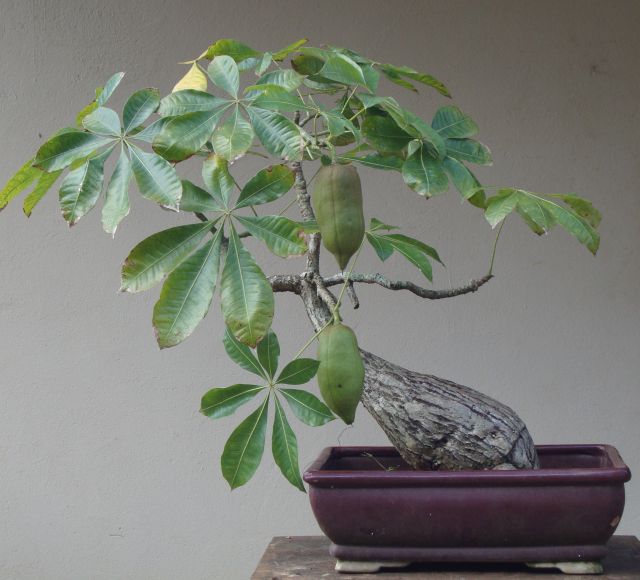
|
|
Fruiting Bombacopsis (Bombacopsis glabra, family Bombacaceae), Brazil Source: "Bombacopsis," Chaddadbonsai's Blog, http://chaddadbonsai.wordpress.com/pseudobombax/ |
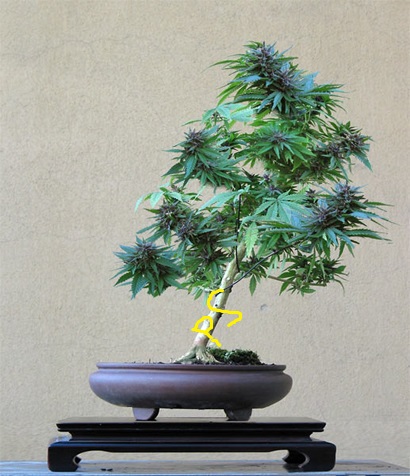
|
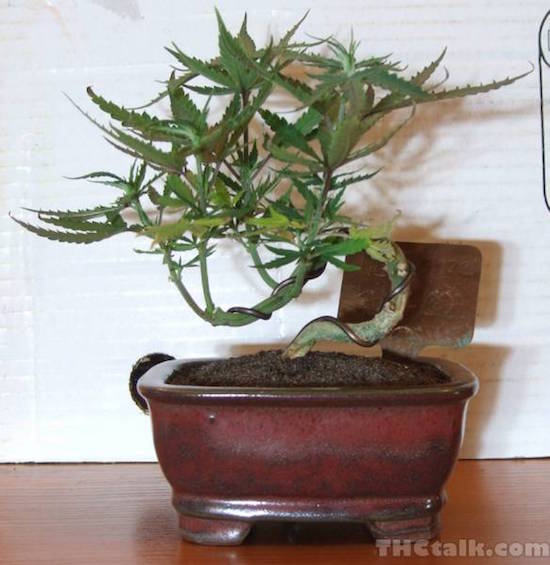
|
|
Widely-seen but Photoshopped Cannabis, "Blueberry," Germany. Source: Art of Bonsai project Halloween 2007, http://artofbonsai.org/galleries/halloween07.php, 22nd image. |
Shaped Marijuana plant (Cannabis sativa, family Cannabaceae),
in a Bonsai pot, photo by THCtalk. Source: "Marijuana Bonsai?," Bonsai Empire blog, May 20, 2015, https://www.bonsaiempire.com/blog/marijuana-bonsai. |
|
We only learned today (09/18/17) that the widely-seen tree on the left above which we have long
had on this page was actually a Photoshopped picture. In the interest of the accuracy of this website,
we have immediately corrected the error. See also the first video on
this page and the step-by-step
text here. |

|
|
Capsicum, after wiring but before pinching, (Capsicum sp., family Solanaceae), Finland Source: "Creating and growing your own Bonchi's," Fatalii's Growing Guide, http://fatalii.net/growing/index.php?option=com_content&task=view&id=95&Itemid=105 |
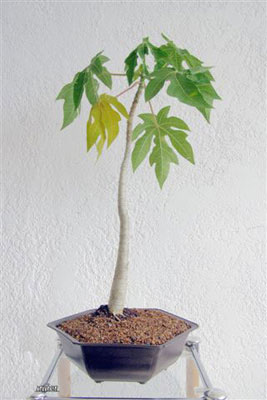
|
|
Papaya (Carica papaya, family Caricaceae), Italy? Source: Negozio Bonsai, http://eshop.zr-giardinaggio.it/store/product_info.php?cPath=143&products_id=1292. NOTE: We do notice that this specimen is not as mature as the others on this page. Even younger and less developed plants as coffee and avocado have been seen as bonsai-in-training. When more developed versions of these are seen, then we will place them here. |

|
|
Coca (Erythroxylum coca, family Erythroxylaceae), Columbia Source: http://webzoom.freewebs.com/banting/ImagesA1/A%20cocaine%20bonsai.jpg, per Internet Bonsai Forum posting by Russell Coker 04/20/2010, picture is of Vaughn Banting (Louisiana, USA) during visit to Columbia in late 1980s or 90s. NOTE: See also this forest-collected False coca (Erythroxylum deciduum) in Brazil, http://ibonsaiclub.forumotion.com/bonsai-f1/false-coca-t2425.htm?sid=ffb592353caa308017813e704e8826ad. |
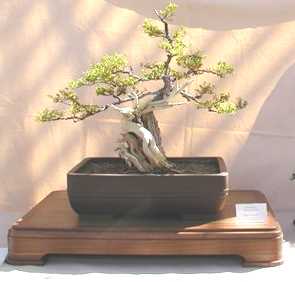
|
|
Creosote / Greasewood (Larrea tridentata, family Zygophyllaceae), Arizona, USA Source: Phoenixbonsai.com/Display/Creosote.html. |
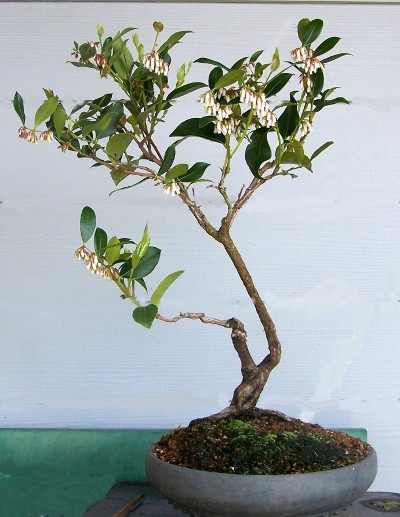
|
|
Shining Fetterbush (Lyonia lucida, family Ericaceae), Florida, USA Source: personal e-mail to RJB from Jim Lewis on 25 Apr 2010, "This was dug from a swamp on my Florida property." |

|
|
Mango (Mangifera indica, family Anacardiaceae), Cochin, India Source: "Mango Bonsai Tree" http://www.flickr.com/photos/shajis/394927589/ |
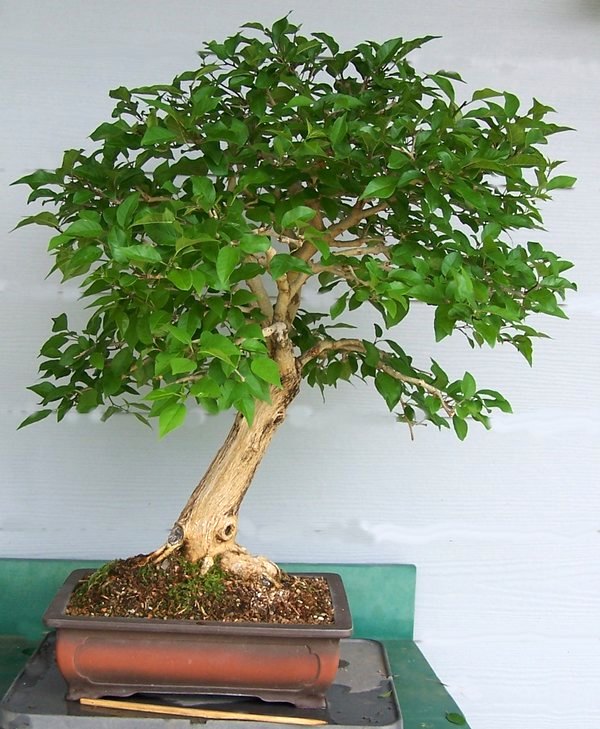
|
|
Osage orange (Maclura pomifera, family Moraceae), Florida, USA Source: personal e-mail to RJB from Jim Lewis on 20 Apr 2010, "growing this one since 1999. It came from a root sprout from a large one I had grown from seed and planted along my drive..." |
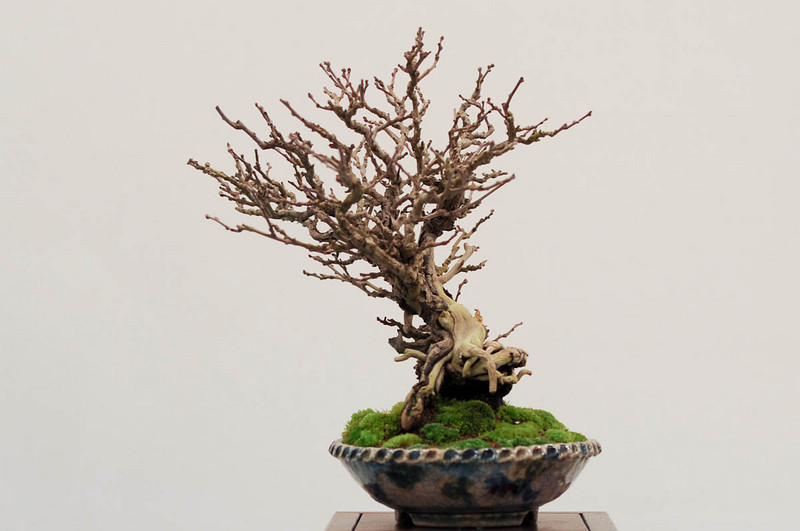
|
|
Gooseberry (Ribes uva-crispa, family Grossulariaceae), California, USA Source: Bay Island Bonsai exhibit in Pleasanton, CA, http://dupuich.smugmug.com/Bonsai/Exhibits/BIB-11th-annual-exhibit/11016957_i9bz2/1/#774514130_gF3jP-A-LB. |

|
|
Blaze Rose (Rosa x 'Blaze') (Rosa sp., family Rosaceae), North Carolina, USA Source: "The Beauty of Rose Bonsai," International Bonsai, IBA, 1991/No 4, pg. 27, photo by James Effinger. |
|
|
|
Poison Ivy (Toxicodendron radicans, family Anacardiaceae), North East, USA. Source: http://www.artofbonsai.org/galleries/halloween07.php, 7th image. |
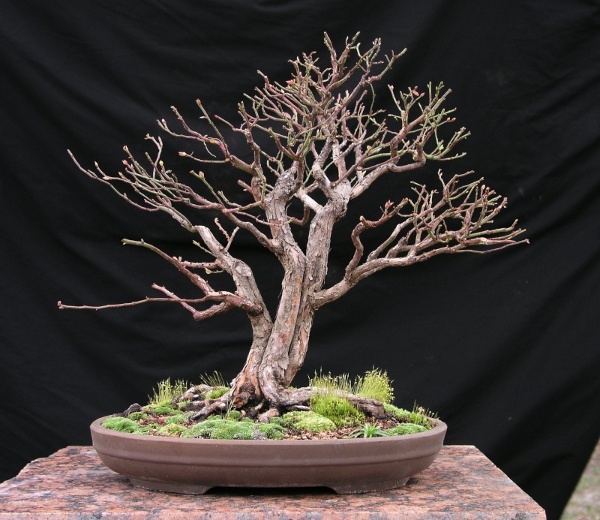
|
|
Blueberry (Vaccinium sp.,
family Ericaceae) from collected material, Florida, USA. |
|
See pictures and video
of a different specimen of a blueberry bonsai in bloom, Florida, USA. [Somewhat an honorable mention, since Yoshimura and Halford have Dwarf mossberry (V. vitis-idaea, pg. 194) and Mossberry (V. oxycoccus, pg. 203), and there is an obscure historical reference to a dwarf whortleberry (V. caespitosum) being collected in New York state by Chinese visitors in the mid-1840s.] (Source: Internet Bonsai Club Forum posting 02 Feb 2010, http://ibonsaiclub.forumotion.com/bonsai-f1/a-blueberry-t2213.htm) |

|
|
Potato (Lycianthes
rantonnetii, family Solanaceae), Cary Sullivan's potato vine bonsai exhibited at the 2015 GSBF
Convention in California. See also this thread on the Internet Bonsai Club Forum. |
|
Anyone who knows of additional less common plants made into bonsai is asked to please contact rjb@magiminiland.org. Contributor acknowledgment will be posted. Please include as many details as possible. Thank you! (Potato bonsai -- which result in shaped plants vastly different than the above -- and banana bonsai will not be considered here for now.) |
Home > Bonsai History > Big Picture > Less Usual